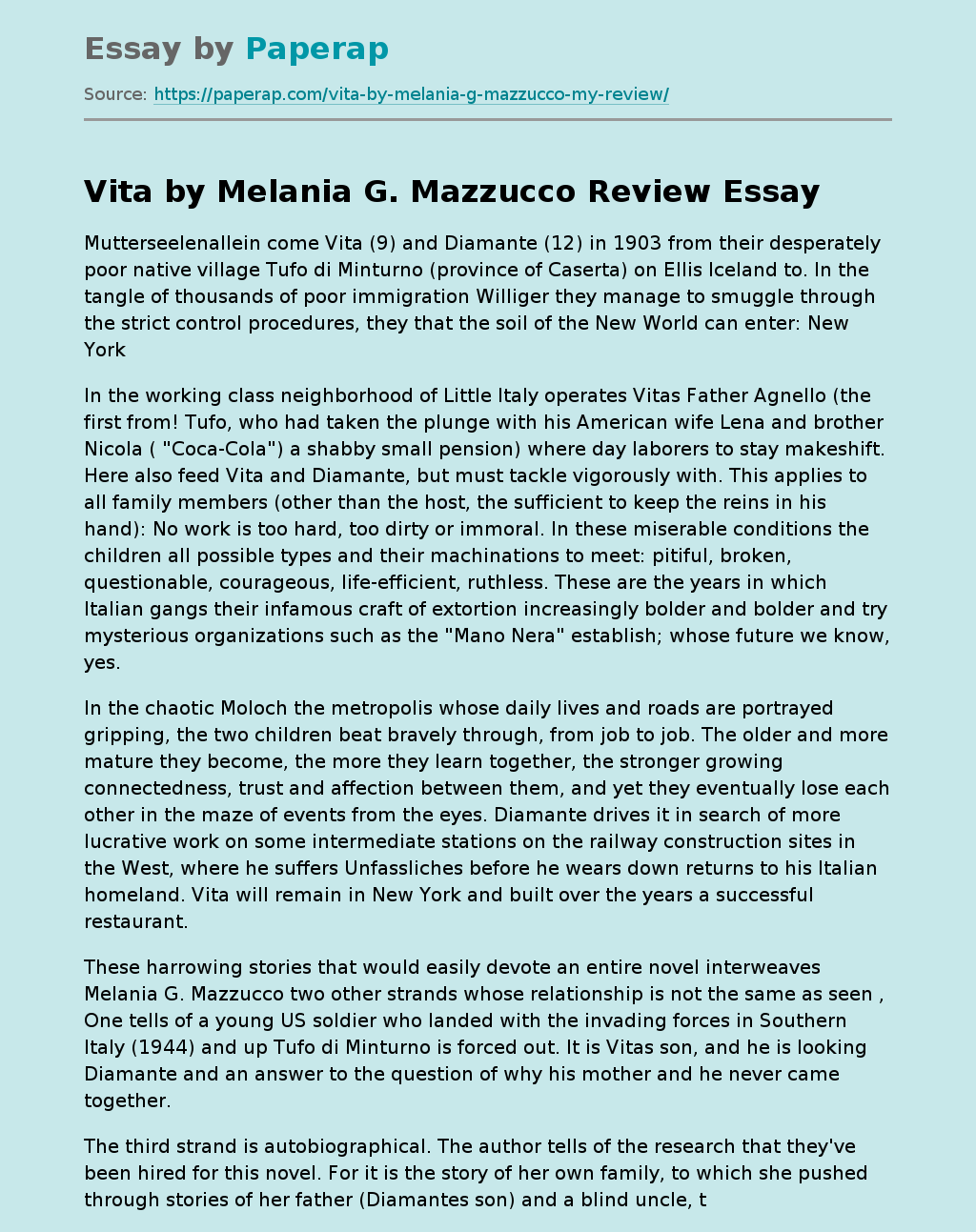Vita by Melania G. Mazzucco Review
Mutterseelenallein come Vita (9) and Diamante (12) in 1903 from their desperately poor native village Tufo di Minturno (province of Caserta) on Ellis Iceland to. In the tangle of thousands of poor immigration Williger they manage to smuggle through the strict control procedures, they that the soil of the New World can enter: New York
In the working class neighborhood of Little Italy operates Vitas Father Agnello (the first from! Tufo, who had taken the plunge with his American wife Lena and brother Nicola ( “Coca-Cola”) a shabby small pension) where day laborers to stay makeshift.
Here also feed Vita and Diamante, but must tackle vigorously with. This applies to all family members (other than the host, the sufficient to keep the reins in his hand): No work is too hard, too dirty or immoral. In these miserable conditions the children all possible types and their machinations to meet: pitiful, broken, questionable, courageous, life-efficient, ruthless. These are the years in which Italian gangs their infamous craft of extortion increasingly bolder and bolder and try mysterious organizations such as the “Mano Nera” establish; whose future we know, yes.
In the chaotic Moloch the metropolis whose daily lives and roads are portrayed gripping, the two children beat bravely through, from job to job. The older and more mature they become, the more they learn together, the stronger growing connectedness, trust and affection between them, and yet they eventually lose each other in the maze of events from the eyes. Diamante drives it in search of more lucrative work on some intermediate stations on the railway construction sites in the West, where he suffers Unfassliches before he wears down returns to his Italian homeland.
Vita will remain in New York and built over the years a successful restaurant.
These harrowing stories that would easily devote an entire novel interweaves Melania G. Mazzucco two other strands whose relationship is not the same as seen , One tells of a young US soldier who landed with the invading forces in Southern Italy (1944) and up Tufo di Minturno is forced out. It is Vitas son, and he is looking Diamante and an answer to the question of why his mother and he never came together.
The third strand is autobiographical. The author tells of the research that they’ve been hired for this novel. For it is the story of her own family, to which she pushed through stories of her father (Diamantes son) and a blind uncle, then from letters, newspapers, New York police archives, passenger and payrolls reconstructed and completed with a lot of imagination and empathy. <
the three-division makes the novel structure complicated and track sometimes difficult, but the wonderful style – sometimes brutally realistic, sometimes fantastic, sometimes in factual Berichtston – can not escape the reader. In retrospect, it is taken the more, knowing that the people actually several – have lived – something like this. About individual fates, this great book reminds (the 2003 Premio Strega received) to the millions of Italians who late 19th and early 20th century left their home bled to search in America their luck, but there usually take place a American Dream rather lived through a nightmare of exploitation, crime, deprivation and hopelessness again.
Vita by Melania G. Mazzucco Review. (2019, Nov 18). Retrieved from https://paperap.com/vita-by-melania-g-mazzucco-my-review/

